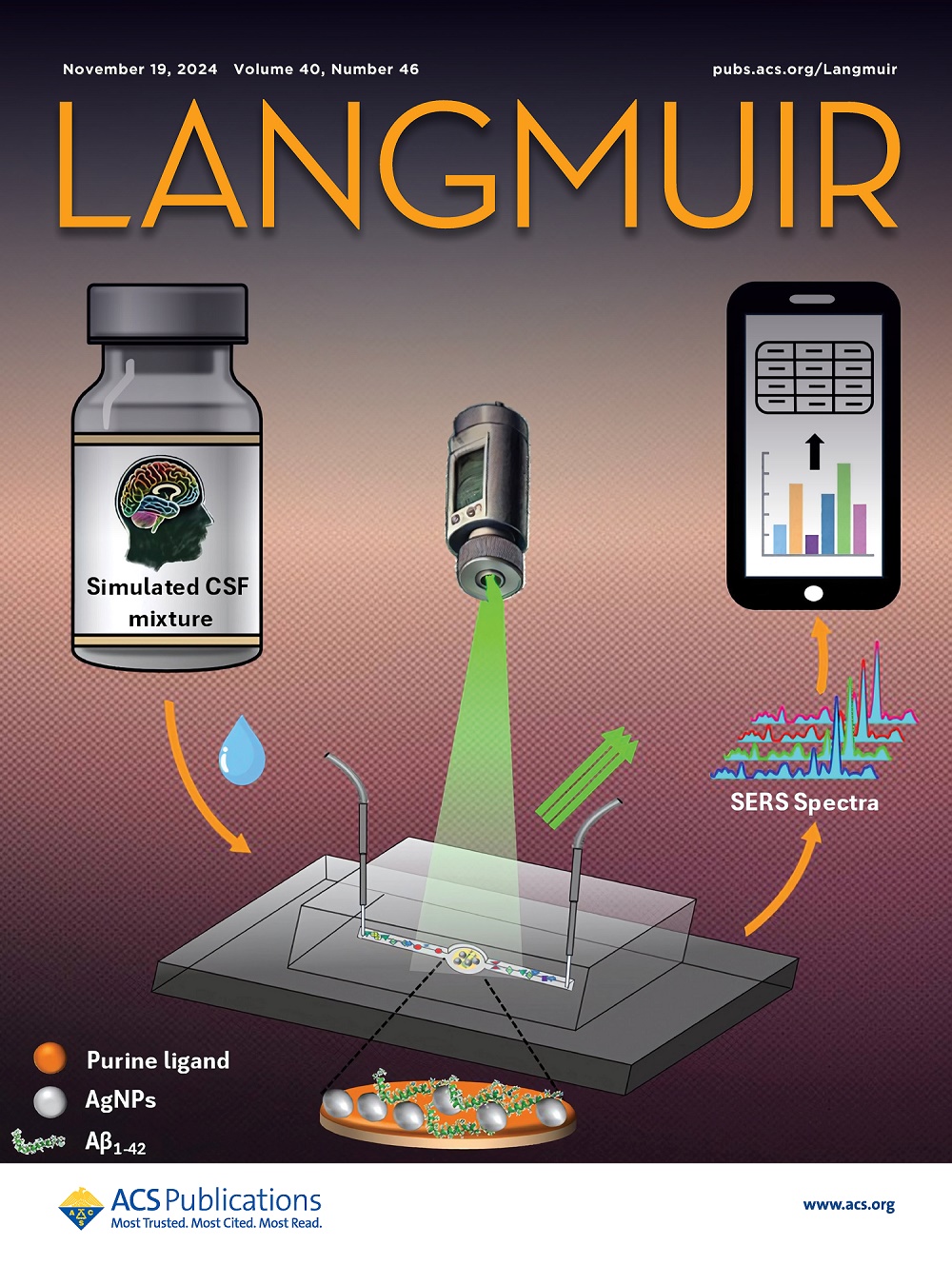Effect of Added Salt and Hydrophobic Comonomer on the Synthesis and Adsorption Behavior of Cationic Sterically-Stabilized Nanoparticles.
IF 3.9
2区 化学
Q2 CHEMISTRY, MULTIDISCIPLINARY
引用次数: 0
Abstract
Cationic sterically stabilized diblock copolymer nanoparticles are prepared by reversible addition-fragmentation chain transfer (RAFT) aqueous emulsion polymerization, whereby the steric stabilizer and core-forming chains comprise [2-(methacryloyloxy)ethyl]trimethylammonium chloride (METAC) and benzyl methacrylate (BzMA) repeat units, respectively. The mean degree of polymerization (DP) of the core-forming PBzMA block is systematically varied to produce a series of spherical nanoparticles of increasing mean diameter. In a second series of nanoparticles, a hydrophobic comonomer (lauryl methacrylate, LMA) is statistically copolymerized with METAC prior to RAFT aqueous emulsion polymerization of BzMA, which produces cationic amphiphilic nanoparticles. In each case, the effect of added salt on the nanoparticle particle size distribution is examined. Furthermore, the effect of added salt on the adsorption of such nanoparticles at the planar silica/water interface is studied using a quartz crystal microbalance (QCM). The presence of salt leads to the formation of more well-defined nanoparticles because it screens the electrostatic repulsion between the cationic steric stabilizer chains. Added salt also enables stronger adsorption onto planar silica as it reduces the lateral repulsion between neighboring cationic nanoparticles. In the case of the cationic amphiphilic nanoparticles, incorporation of the hydrophobic LMA comonomer leads to even stronger adsorption and higher corresponding surface coverage in the presence of either 1 or 10 mM KCl. However, surface aggregates of the latter nanoparticles are observed by SEM in the presence of 100 mM KCl.添加盐和疏水共聚体对阳离子位稳纳米颗粒合成及吸附行为的影响。
采用可逆加成-破碎链转移(RAFT)水乳液聚合法制备阳离子立体稳定二嵌段共聚物纳米颗粒,其中立体稳定剂和成核链分别由[2-(甲基丙烯酰氧基)乙基]三甲基氯化铵(METAC)和甲基丙烯酸苄酯(BzMA)重复单元组成。形成核心的PBzMA块体的平均聚合度(DP)系统地变化,以产生一系列平均直径增加的球形纳米颗粒。在第二系列纳米颗粒中,疏水共聚单体(甲基丙烯酸月桂酯,LMA)在RAFT水乳液聚合BzMA之前与METAC共聚,从而产生阳离子两亲性纳米颗粒。在每种情况下,研究了添加盐对纳米颗粒粒径分布的影响。此外,利用石英晶体微天平(QCM)研究了添加盐对纳米颗粒在平面二氧化硅/水界面吸附的影响。盐的存在导致形成更明确的纳米颗粒,因为它屏蔽了阳离子空间稳定剂链之间的静电排斥。添加的盐也能在平面二氧化硅上产生更强的吸附,因为它减少了相邻阳离子纳米颗粒之间的侧向排斥。在阳离子两亲性纳米颗粒的情况下,疏水LMA共聚物的掺入导致在1或10 mM KCl存在下更强的吸附和更高的相应表面覆盖率。然而,后一种纳米颗粒的表面聚集体在100 mM KCl存在下通过扫描电镜观察到。
本文章由计算机程序翻译,如有差异,请以英文原文为准。
求助全文
约1分钟内获得全文
求助全文
来源期刊

Langmuir
化学-材料科学:综合
CiteScore
6.50
自引率
10.30%
发文量
1464
审稿时长
2.1 months
期刊介绍:
Langmuir is an interdisciplinary journal publishing articles in the following subject categories:
Colloids: surfactants and self-assembly, dispersions, emulsions, foams
Interfaces: adsorption, reactions, films, forces
Biological Interfaces: biocolloids, biomolecular and biomimetic materials
Materials: nano- and mesostructured materials, polymers, gels, liquid crystals
Electrochemistry: interfacial charge transfer, charge transport, electrocatalysis, electrokinetic phenomena, bioelectrochemistry
Devices and Applications: sensors, fluidics, patterning, catalysis, photonic crystals
However, when high-impact, original work is submitted that does not fit within the above categories, decisions to accept or decline such papers will be based on one criteria: What Would Irving Do?
Langmuir ranks #2 in citations out of 136 journals in the category of Physical Chemistry with 113,157 total citations. The journal received an Impact Factor of 4.384*.
This journal is also indexed in the categories of Materials Science (ranked #1) and Multidisciplinary Chemistry (ranked #5).
 求助内容:
求助内容: 应助结果提醒方式:
应助结果提醒方式:


